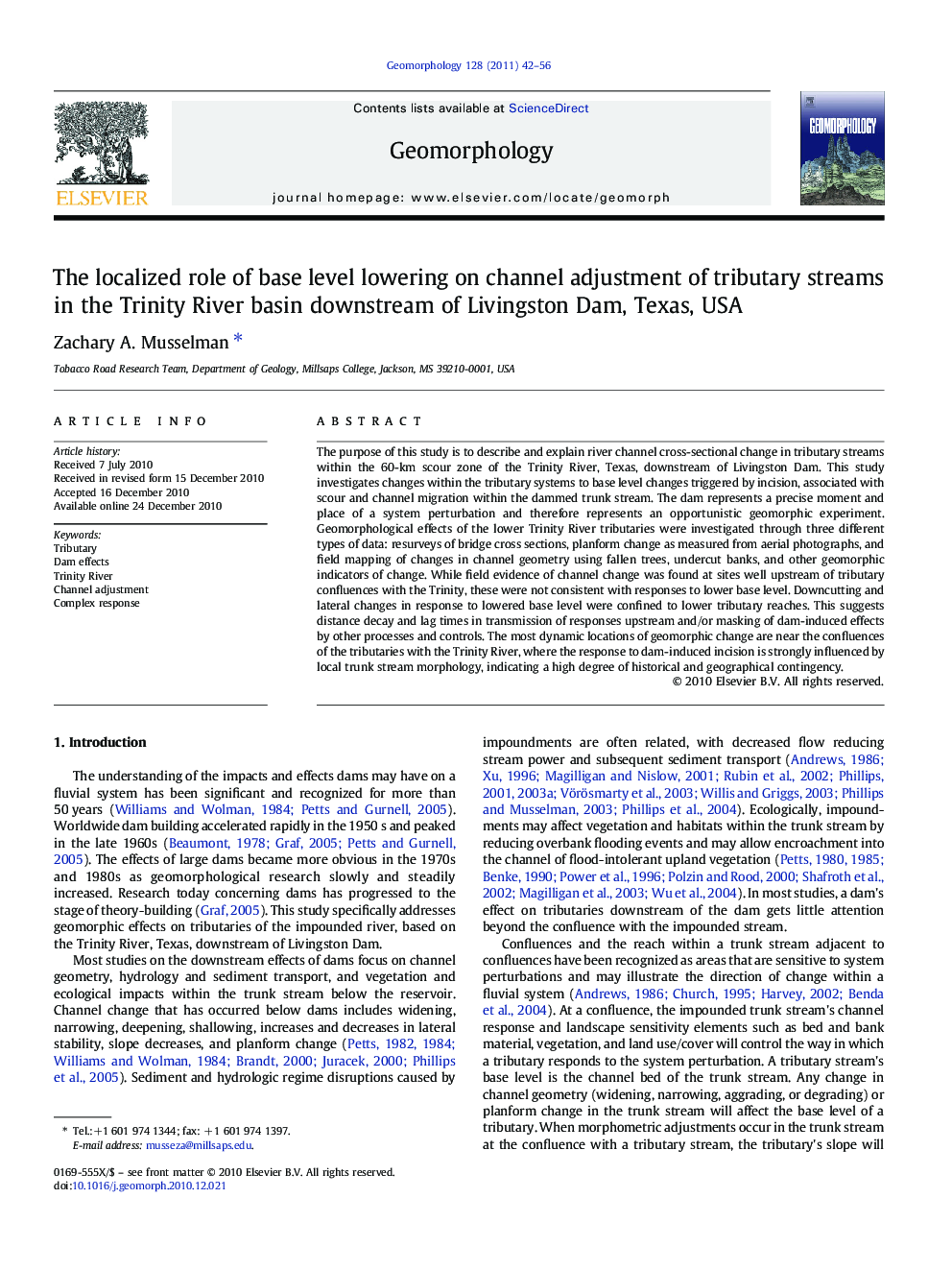| Article ID | Journal | Published Year | Pages | File Type |
|---|---|---|---|---|
| 4685624 | Geomorphology | 2011 | 15 Pages |
The purpose of this study is to describe and explain river channel cross-sectional change in tributary streams within the 60-km scour zone of the Trinity River, Texas, downstream of Livingston Dam. This study investigates changes within the tributary systems to base level changes triggered by incision, associated with scour and channel migration within the dammed trunk stream. The dam represents a precise moment and place of a system perturbation and therefore represents an opportunistic geomorphic experiment. Geomorphological effects of the lower Trinity River tributaries were investigated through three different types of data: resurveys of bridge cross sections, planform change as measured from aerial photographs, and field mapping of changes in channel geometry using fallen trees, undercut banks, and other geomorphic indicators of change. While field evidence of channel change was found at sites well upstream of tributary confluences with the Trinity, these were not consistent with responses to lower base level. Downcutting and lateral changes in response to lowered base level were confined to lower tributary reaches. This suggests distance decay and lag times in transmission of responses upstream and/or masking of dam-induced effects by other processes and controls. The most dynamic locations of geomorphic change are near the confluences of the tributaries with the Trinity River, where the response to dam-induced incision is strongly influenced by local trunk stream morphology, indicating a high degree of historical and geographical contingency.
